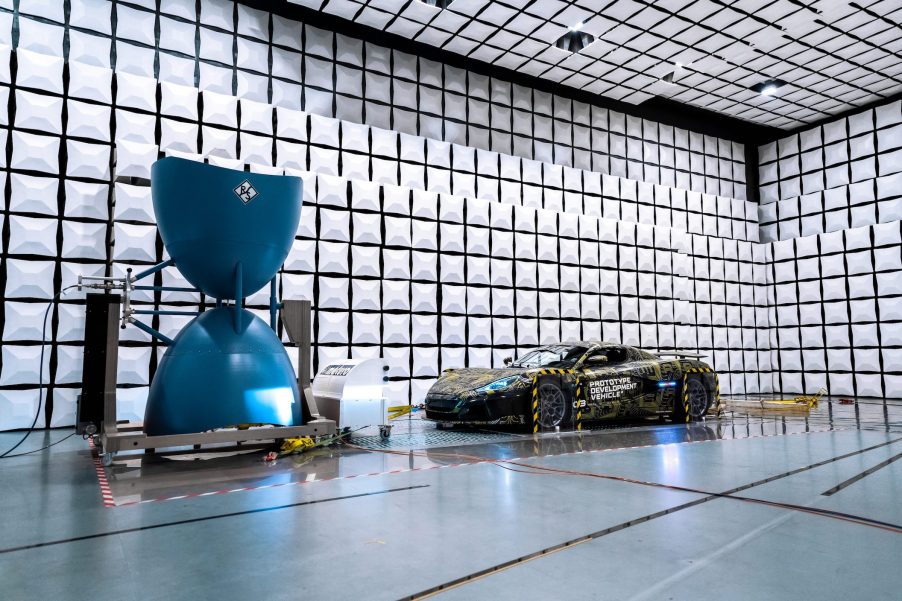
The Rimac C_Two Doesn’t Just Run Stoplights–It Kills Them
I’m not sure if I’ve actually seen this in a James Bond film or maybe Batman or something, but the idea of driving around and causing electronics to fry as you pass seems like a handy feature for a car. Well, maybe it’s only handy if you need to cause unfettered destruction while ripping through a Soviet missile base. The reality of new tech is that it sometimes has unforeseen repercussions that only come out in the testing. Electric cars are moving at a breakneck pace, and things happen. The Rimac C_Two has its own strange and unforeseen issue; it fries stoplights with electromagnetic radiation.
According to The Drive, every electric vehicle emits a little bit of electromagnetic radiation. This radiation requires shielding to keep it from affecting other electronics nearby. If our cell phones emit a fairly decent amount of electromagnetic radiation, how much more do we think a high-powered performance EV would emit with its many powerful fuel cells?
The Rimac C_Two is a whatever you call something past a hypercar
The Rimac C_Two is beyond serious. Rimac achieved worldwide infamy when former Top Gear host Richard Hammond crashed a Rimac. And, luckily, he escaped before the car exploded. Before we can get too judgy, the car Hammond crashed was the precursor to the current C_Two. This is an all-electric hypercar that weighs 4,300 lbs, which is no problem for the nearly 2,000 (1,914) horsepower Rimac. As you might imagine, electromagnetic radiation is a force to be reckoned with in such a car.
To describe the power output in the Rimac requires the use of a lot of big words
The Drive references Borna Radman, the Rimac’s vehicle electrical multiplex technician talking about the electromagnetic power being a challenge to secure. This requires tons of logging and note-taking to see how each of the car’s complex systems will emit EMR. Rimac also has to know how it will react to other sources of EM waves on public roads.

Rimac begins testing in a completely shielded room. In that environment, its many, many complex systems must perform flawlessly. That means four independent permanent-magnet electric motors, two-speed gearboxes, seven liquid cooling systems, 7,000 lithium-manganese-nickel battery cells, active suspension, aero, infotainment, and safety equipment featuring ultrasonic and Lidar sensors all have to work without any interference from other electrical systems in the Rimac.
Where it really starts to get wild is the potential for the Rimac to discharge power or voltage switch and cause traffic lights to bug out. Imagine the chaos of a Rimac blasting through an intersection in NYC, and the block shuts down, making all signals, cameras, and lights malfunction.
The Rimac C_Two gives us a peek into how EV regulations will change the rest of the world
With EVs getting more and more popular, the writing is on the wall; the future is clearly electric. We already lean very heavily on a variety of electronics that all have their own electromagnetic field. What happens if these devices start to interfere with one another? The Rimac C_Two is such a powerful electronic device that forces the company to think through the implications and possible effects that something like that can have on public roads.
Between you and I, dear reader, I am not smart enough to understand everything included in the testing process here, but I trust that Rimac has some folks kicking around in lab coats which are a good bit smarter than I am. In the meantime, frying some speed cameras and radar guns isn’t the worst side effect of 1,914 hp I can think of.



